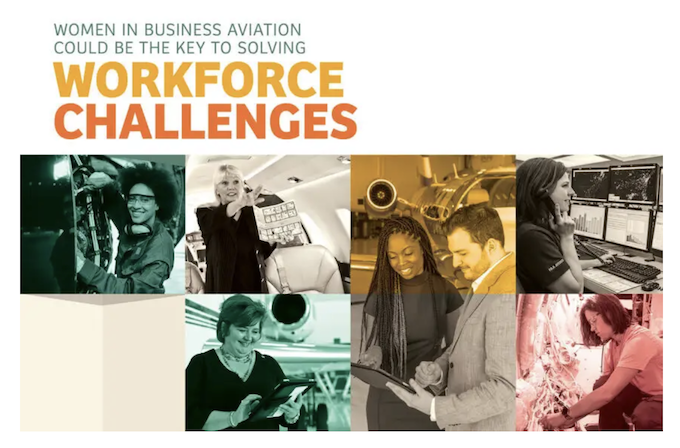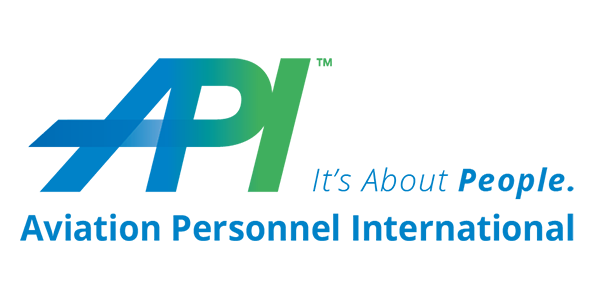
This article about women in business aviation originally appeared in NBAA’s Jan/Feb 2023 Business Insider publication.
Amid a gaping disparity in numbers compared with men, women in business aviation are using networking, collaboration, mentoring and shared resources to change the landscape.
Women make up less than 20% of most aviation occupations, according to “Women in Aviation: A Workforce Report,” by Rebecca Lutte, an associate professor in the College of Aviation at Embry-Riddle Aeronautical University (ERAU). Lutte’s report also revealed that, “Over the past 15 years, women in aviation have experienced inconsequential growth,” when it comes to pilots, AMTs and air traffic controllers.
Research by Hera Aviation Group, a non-profit coaching and development organization dedicated to making the industry more equitable for women, caregivers and underrepresented cohorts, put a number to the issue: “Professional female aviators make up only 5% of the industry.” By comparison, the Bureau of Labor Statistics says women represent 47% of the total U.S. workforce. So why the gaping disparity?
“The biggest barrier that discourages women from entering and staying in aviation careers is culture – and it’s the hardest one to change,” said Women in Aviation Advisory Board (WIAAB) chair Dr. Heather Wilson. “Women simply don’t feel like they belong.”
Moranda Reilly, a senior project leader at L3Harris and vice president of Women in Aviation’s Capital Region chapter offered additional context: “People often say, we’re getting more women into aviation. But the reason they think there’s more women in aviation is because the industry has grown as a whole. The trend for the number of women who continue to do better in the industry has been flat.” The WIAAB report claims, “It’s been 20% for decades.”
“Especially in a tight post-pandemic labor market, the aviation industry desperately needs women to choose aviation careers. Attracting and retaining women is critical to the future of the industry,” said Wilson.
A Great Time to Enter the Field
Sheryl Barden, CAM and CEO of Aviation Personnel International, said the NBAA’s Young Professionals in Business Aviation (YoPro) Council is going strong these days, with women making up at least 50% of the council.
“We do have women in leadership roles at fuel vendors, as sales brokers, as well as a number of women business aviation attorneys.” According to Barden, “many of our business aviation organizations are truly customer service organizations, a place where women really thrive and actually outperform men.”
On the positive side, “This fall’s incoming freshman class at ERAU is just shy of 30% women,” said Lutte. She also said in surveys, women say that what attracts them overall “is the excitement about aviation, the passion for aviation, the desire to be challenged. It’s really a great time for women to enter the field.”
Behaviors and Principles
“Simply adding women into an ecosystem that does not support the needs of this unique cohort, however, will not address workforce issues,” warned Jessica Webster, a Gulfstream G500/G600 captain and founder and president of Hera Aviation Group.
“What matters is how an organization harnesses its diversity and whether it’s willing to reshape its power structure,” Webster explained. “An organization’s cultural embrace matters. True organizational excellence in any industry requires much more than a set of tools … meaning more women. It requires the right behaviors guided by the right principles. Leaders have the unique ability to model those behaviors and set the standard for the rest of the industry leading to cultural change. Culture eats strategy for lunch.”
‘We Don’t Always See Them’
Liz Clark, CAM, executive director of Women in Corporate Aviation (WCA) and a pilot for the corporate side of FedEx in Memphis, TN, anecdotally acknowledged there are many more women in business aviation than there were when she entered the business as a King Air co-pilot in Atlanta in 1989. “Yes, there are more women in our industry, but they’re not in traditional roles,” she said.
“We are beginning to see them in dispatch, in the back office, in scheduling, or marketing, or sales brokerage roles. They’re stepping into high-level positions, but we don’t always see them because we always focus on the role of the pilot.”
According to Clark, at a recent business aviation career day at Auburn University, approximately 125 students turned out for the WCA breakfast.
‘We Must Change the System’
Industry leaders agree there’s still a long road ahead. “Harassment is still a deterrent to our ability to recruit, retain and advance women,” Lutte said. “When 1,000 women in aviation were surveyed, 71% reported they’d experienced sexual harassment in an aviation workplace or setting. So, when we have women in leadership positions, it helps address several factors, including policies surrounding work-life balance, zero-tolerance policies and culture change.”
Work-life balance “represents systemic barriers that keep women from being a valuable and essential part of the aviation workforce. The current systems were built by those that mostly access it. This does not largely include women. As such, the systems of yesterday are driving the results of today. If we want different results, we must change the system,” said Webster.
Amidst the chaos of COVID-19 in 2020, Jo Damato, CAM, NBAA’s senior vice president, education, training and workforce development, hosted a Women in Business Aviation chat lounge as part of a virtual NBAA Business Aviation Convention & Exhibition (NBAA-BACE).
“We were all desperate for a personal connection in the midst of the pandemic,” Damato recalled. “I asked if anyone would like to stay connected. Quite a few responded affirmatively. After that, it was easy. I started a monthly Women in Business Aviation Lean-In Circle. We met virtually for all of 2021, but the connections still became strong.” When the group met in person at NBAA-BACE in October 2023, “We refused to sit around a table and gathered the chairs in a tight circle without a barrier between us,” Damato said. “I’m thankful for these women and the strength I’ve gained from knowing them and learning from them.”
As an NBAA volunteer, Lee Brewster, vice president at aircraft acquisitions and sales company Thoroughbred Aviation, was the first female member of NBAA’s Maintenance Committee in 2009. “Being a member of the committee has been instrumental in my career,” Brewster said, “and I am honored also to be the first female in a leadership role on the committee, currently serving as vice chair.”
Today, the 47-member committee includes 10 active women members, more than 20% of the roster and growing. Brewster also remarked on the importance of being involved: “The Maintenance Committee has a robust workforce development team, with three of our female members leading the charge. As our entire committee is out in the field talking to people interested in aviation maintenance, we are finding more young women interested in – and actively pursuing – their A&P certificate. They are taking advantage of the opportunities, learning that finding mentors, allies and sponsors is key to their growth and retention.” Barden added, “More women are entering business aviation as maintenance professionals. But it’s more the exception than the rule.”
View original article about women in business aviation on NBAA.org.

There’s so much work to be done in the Biz Av Industry still. It’s 2024, and most Women in Aviation still don’t get paid maternity leave. It’s a state and country issue, yes, but Aviation Companies are not accommodating to mothers. Even when a building goes through updates, we’re still not included – no where to safely pump if we need to. Salaries in Biz Av are also not very competitive so affording childcare becomes an issue, so we end up leaving the industry to find more. Work schedules are also very unflexible and offer no room for work-life balance. I could keep going, but the real issue is that those in the position to make changes still have not, and seem to not want to.
Chani,
Thank you for sharing your perspective on the challenges faced by women in the business aviation industry.
Your insights highlight crucial issues, such as maternity leave, workplace accommodations and the need for more competitive salaries.
It’s essential for the industry to address these concerns to foster inclusivity and retain valuable talent. Your voice contributes to the ongoing dialogue for positive change.
Jennifer Pickerel